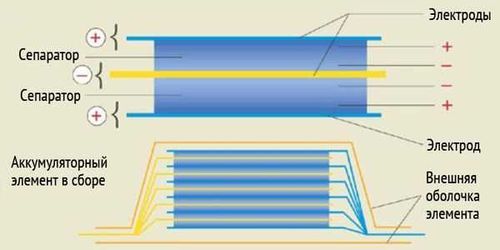
Will liquid crystals as electrolytes in lithium-ion batteries make it possible to create stable lithium metal cells?
Content
An interesting study by Carnegie Mellon University. Scientists have proposed using liquid crystals in lithium-ion cells to increase their energy density, stability, and charging capacity. The work has not yet advanced, so we will wait at least five years for their completion - if at all possible.
Liquid crystals have revolutionized displays, now they can help batteries
Table of contents
- Liquid crystals have revolutionized displays, now they can help batteries
- Liquid crystals as a trick to obtain a liquid-solid electrolyte
In short: lithium-ion cell manufacturers are currently seeking to increase the energy density of cells while maintaining or improving cell performance, including, for example, improving stability at higher charging powers. The idea is to make batteries lighter, safer, and faster to recharge. A bit like the fast-cheap-good triangle.
One of the ways to significantly increase the specific energy of cells (by 1,5-3 times) is the use of anodes made of lithium metal (Li-metal).... Not carbon or silicon, as before, but lithium, an element that is directly responsible for the cell's capacity. The problem is that this arrangement quickly develops lithium dendrites, metal protrusions that over time connect the two electrodes, damaging them.
Liquid crystals as a trick to obtain a liquid-solid electrolyte
Work is currently underway to package anodes in various materials to form an outer shell that allows the flow of lithium ions but does not allow solid structures to grow. A potential solution to the problem is also the use of a solid electrolyte - a wall through which the dendrites cannot penetrate.
Scientists at Carnegie Mellon University took a different approach: they want to stay with proven liquid electrolytes, but based on liquid crystals. Liquid crystals are structures that are halfway between liquid and crystals, that is, solids with an ordered structure. Liquid crystals are liquid, but their molecules are highly ordered (source).
At the molecular level, the structure of a liquid crystal electrolyte is just a crystalline structure and thus blocks the growth of dendrites. However, we are still dealing with a liquid, that is, a phase that allows ions to flow between the electrodes. Dendrite growth is blocked, loads must flow.
This is not mentioned in the study, but liquid crystals have another important feature: once voltage is applied to them, they can be arranged in a certain order (as you can see, for example, by looking at these words and the border between black letters and a light background). So it may happen that when the cell starts charging, the liquid crystal molecules will be positioned at a different angle and "scrape" dendritic deposits from the electrodes.
Visually, this will resemble the closing of the flaps, say, in the ventilation hole.
The downside of the situation is that Carnegie Mellon University has just begun research on new electrolytes... It is already known that their stability is lower than that of conventional liquid electrolytes. Cell degradation occurs faster, and this is not the direction that interests us. However, it is possible that over time the problem will be resolved. Moreover, we do not expect the appearance of solid-state compounds earlier than the second half of the decade:
> LG Chem uses sulfides in solid state cells. Solid electrolyte commercialization no earlier than 2028
Introductory photo: Lithium dendrites are formed on the electrode of a microscopic lithium-ion cell. The large dark figure on top is the second electrode. The initial "bubble" of lithium atoms shoots up at some point, creating a "whisker" that is the basis of the emerging dendrite (c) PNNL Unplugged / YouTube:
This may interest you:
